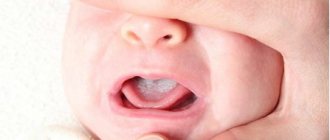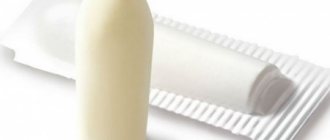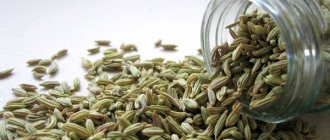Thrush is one of the most common diseases of the female genital area. During pregnancy and breastfeeding, the risk of thrush increases. Frequent detection of this disease is associated with changes in hormonal levels.
If the manifestations of thrush during breastfeeding are severe, the woman may be prescribed antifungal agents. One of the effective remedies against candidiasis during breastfeeding is Pimafucin.
The term “thrush” is due to the characteristic vaginal discharge associated with the disease. Candidiasis or thrush is a fungal infection that occurs on the mucous membranes and skin of the external genitalia. In women who are breastfeeding, thrush can be localized on the nipples.
In fact, the disease affects women of any age. Fungal infections occur in both newborn girls and older women after menopause. Candidiasis is often associated with immune and hormonal disorders in the body.
The cause of thrush is Candida fungi, which belong to the opportunistic microflora. Together with other representatives of normal flora, for example, streptococci, staphylococci, fungi are found on the mucous membranes and skin. Their number is insignificant, otherwise an inflammatory process may develop.
The genital mucosa is a kind of defense mechanism. In the vaginal microflora, lactobacilli are predominant, breaking down the glycogen formed on the surface of the mucosa to form lactic acid. This component is necessary to maintain adequate acidity of the vagina, which does not allow microbes to multiply.
When lactobacilli unite into colonies, they, together with waste products, form a glycocalyx. This is a protective film, thanks to which pathogenic microorganisms cannot penetrate the vaginal thickness.
When the number of lactobacilli is reduced, the acidity level also decreases. As a result, there is an increased proliferation of opportunistic microflora and the occurrence of inflammation. With minor deviations, a healthy immune system copes with temporary changes. However, in the presence of concomitant pathologies, the body cannot cope with a fungal infection.
Thrush is often caused by physiological causes - pregnancy and breastfeeding. During these periods, structural changes in the vaginal mucosa and hormonal imbalance occur. The same processes occur with the onset of menopause.
Experts call taking antibiotics one of the main causes of candidiasis.
Acute pathology occurs with pronounced manifestations, especially during breastfeeding. This is due to the fact that in women with breastfeeding, candidiasis can affect both the vaginal mucosa and the skin of the nipples. Lack of time often leads to a woman with breastfeeding ignoring symptoms, which over time can cause the acute form of the disease to transform into a chronic one. The recurrent chronic form is characterized by a persistent course and treatment difficulties.
Why does thrush occur during lactation?
Thrush is caused by fungi of the genus Candida, so the disease is correctly called candidiasis. Fungi are opportunistic, present in the human body from birth and under normal conditions of human health do not manifest themselves in any way. When immunity is weakened, certain chronic diseases develop, or infection occurs, fungi begin to multiply intensively.
Since pregnancy and childbirth are accompanied by changes in hormonal levels and weakened immunity, candidiasis often appears in nursing women.
Thrush or candidiasis is accompanied by:
- inflammation of the vaginal mucosa (itching, burning, hypermia);
- swelling of the labia;
- intense cheesy discharge;
- pain during sexual intercourse.
The condition is unpleasant, lack of treatment can lead to serious consequences, so the problem requires an urgent solution. At the same time, I would not want to leave the baby without breast milk.
Is it possible to take Pimafucin suppositories during pregnancy?
The period of bearing a child is associated with hormonal changes in the body and a significant weakening of the woman’s immunity. In this regard, many women, being in an interesting situation, are treated for thrush every month. At the same time, obstetricians-gynecologists, as a rule, prescribe Pimafucin in suppositories.
The duration of treatment is usually 3 or 6 days. As long as a woman’s hormones are produced in excess, and the opportunistic flora, which is Candida, grows unhindered, treatment for candidiasis will only be temporary. But immediately after giving birth, the woman will forget that she was tormented by the milkman for most of the term.
Can Pimafucin be used while breastfeeding?
Pimafucin is an effective antifungal drug, available in the form of tablets, cream and vaginal suppositories, suitable for the rapid treatment of candidiasis and does not require interruption of breastfeeding.
Important: the regimen for using the drug must be prescribed by a doctor; independent and uncontrolled use of antibiotics is unacceptable.
The gynecologist takes into account the woman’s health status and concomitant diseases. If treated incorrectly, the disease can become chronic.
Composition and dosage form
3 dosage forms of the drug are available: tablets, cream, vaginal suppositories (suppositories).
Tablets for oral use for breastfeeding are prescribed extremely rarely and require discontinuation of feeding, so suppositories and Pimafucin cream are more suitable for nursing women. The drugs act locally, do not enter the woman’s systemic bloodstream, into breast milk and do not harm the newborn.
One tablet contains: 0.1 grams of natamycin, excipients: 85 milligrams of potato starch, 5 milligrams of povidone K 30, 2.5 milligrams of magnesium stearate, 66 milligrams of lactose monohydrate. Each tablet is enteric-coated; they are packaged in 20 pieces in dark glass bottles. To protect from external influences, the bottles are packaged in a cardboard box.
The cream contains 0.2 grams of natamycin, the excipients are propylene glycol, wax, purified water and some other components. It is packaged in aluminum tubes of 30 grams, the tubes are placed in a cardboard box and supplemented with instructions.
Vaginal suppositories are produced in the form of a torpedo, containing 0.1 grams of natamycin, a fat base, sodium bicarbonate, sorbitan trioleate, polysorbate 80, cetyl alcohol, adipic acid. The candles have a yellowish or brown tint, are packaged in 3 and 6 pieces, and are additionally packaged in cardboard boxes.
Active ingredient
The active ingredient in all forms of the drug is natamycin. This is an antimycotic antibiotic that exhibits particular activity against Candida fungus.
pharmachologic effect
Pimafucin belongs to the polyene antibiotics of the macrolide group. Destroys the integrity of intercellular membranes, causing the death of the fungus. Has a fungicidal effect.
There were no cases of addiction or decreased effectiveness, and no withdrawal syndrome was observed.
Pharmakinetics
The drug is not absorbed from the gastrointestinal tract in the absence of damage to the mucous membranes and dermis.
- for various types of candidiasis (sometimes caused by taking medications);
- candidal vaginitis, balanoposthitis, vulvovaginitis;
- mycoses of the skin.
For thrush or balanoposthitis, treatment is prescribed to both sexual partners.
Advantages and disadvantages of the drug
The advantage is the high effectiveness of the medication, the possibility of use during pregnancy and lactation. Pimafucin is not addictive. The disadvantage of the drug is that if treatment is not long enough, thrush can become chronic.
Treatment is prescribed by a gynecologist, the course ranges from 3 days to 1.5 weeks, depending on the severity of the disease. In severe cases, when the source of infection is in the intestines, a complex effect is necessary. Treatment continues for 3-5 days after the symptoms have completely disappeared. After its completion, the doctor prescribes tests that allow you to evaluate the effectiveness of therapy. Consumers note another drawback - the relatively high cost of the drug.
Drug substitutes
Only a doctor can suggest analogues. You can use Clotrimazole (vaginal tablets and cream), Metronidazole (suppositories), Fluconazole (suppositories). These are effective topical antifungal medications. They do not harm the baby or mother. Compliance with simple hygiene standards, the use of condoms, regular visits to the gynecologist and careful attention to your own health will minimize the risk of developing candidiasis and prevent exacerbations.
The body needs time to recover after pregnancy and childbirth, to allow hormonal levels and weakened immunity to return to normal. Take care of yourself, because you need a lot of strength, and the baby needs a healthy mother.
Thrush is a fairly common disease. Many women suffer from candidiasis while breastfeeding. During lactation, a hormonal imbalance occurs, which reduces the immunity of the nursing mother. For this unpleasant fungus, this situation is the most favorable.
Thrush can develop not only in the vagina, but also affect the mammary glands. Every breastfeeding becomes a real torture for a young mother. She feels a burning sensation, pain, tingling in the nipple area. With a vaginal infection, there may be irritation, discomfort during sexual intercourse, white vaginal discharge, and swelling of the genitals.
Anti-thrush medications prescribed during lactation
In the body, weakened by pregnancy and childbirth, the number of yeast fungi that cause candidiasis increases sharply. It affects the mucous membrane of the external genitalia, as well as the nipples.
Thrush occurs in every third mother. Breastfeeding women are especially susceptible to this disease due to an increase in the hormone prolactin and the lack of regular menstruation and ovulation.
Treatment of candidiasis is prescribed by a doctor, focusing on the safety of the product for the baby. There are a number of drugs that are compatible with lactation, and there are those that require you to stop breastfeeding during the period of use. The first include:
- Hexicon (as part of complex therapy);
- Zalain;
- Clotrimazole;
- Pimafucin;
- Primafungin;
- Ecofucin.
The drugs listed above can be used during lactation, but do not forget about their side effects and contraindications. Therefore, the drug is prescribed on a purely individual basis exclusively by a gynecologist.
In chronic cases, when gentle suppositories do not cope, the woman is prescribed more effective drugs that require giving up breastfeeding:
- Betadine;
- Gynocaps;
- Livarol;
- Nystatin.
If the mother wants to continue feeding the baby with milk, then a break should be taken during the period of drug treatment. To maintain lactation, you need to pump regularly, and choose a special formula for your baby.
Below are recommendations for the drugs listed above, which cannot be regarded as a direct guide to the treatment of thrush. The article is for informational and educational purposes only.
Treatment of nursing
You can get rid of this unpleasant disease with the help of antifungal agents. One of the most popular medications against candidiasis is pimafucin. It comes in three forms: tablets, cream and vaginal suppositories.
- Doctors recommend pimafucin tablets for diseases such as: candidiasis of the oral mucosa, mycosis of the ear canal, skin candidiasis, vaginitis, intestinal candidiasis.
- Pimafucin in the form of vaginal suppositories is taken for: vaginitis, vulvitis, fungal infections on the skin and mucous membranes caused by Candida fungus.
- Pimafucin cream can be used for diseases such as: vulvitis, vaginitis, balanitis, skin candidiasis, otitis media of fungal origin.
Treatment of thrush is often systemic. If Pimafucin tablets are used to treat this disease, then it is better for the mother to stop breastfeeding during this period, as medications can worsen the quality of milk. With the help of systemic therapy, you can get rid of candidiasis much faster than with topical use. However, this method is very rarely prescribed by doctors during lactation.
The most popular treatment for thrush during breastfeeding is Pimafucin suppositories. Also, many doctors recommend that a nursing mother fight this disease using cream. Most often, it is used for mild forms of the disease. And if candidiasis continues to develop, then you should switch to suppositories.
Pimafucin suppositories, as indicated in the instructions for use, contain the antibiotic natamycin, which has an antifungal effect. It not only helps fight thrush, but also does not destroy the microflora.
Using candles in the fight against an unpleasant disease, you can get rid of it much faster. They also help quickly regulate the functioning of the immune system.
The instructions for use state that Pimafucin suppositories are allowed to be used during breastfeeding, so a nursing mother does not have to worry that this drug may harm the baby.
Thrush is a disease that can be sexually transmitted. Therefore, treatment is prescribed not only to the woman, but also to her partner.
Pimafucin tablets are practically not used during the treatment of vaginal candidiasis. Most often, they are prescribed for prevention or to restore intestinal microflora after the use of antibiotics and corticosteroids.
The instructions will help you on how to use the drug correctly and in what dosage. Suppositories are administered only vaginally in a lying position. The cream is applied externally. If suppositories and cream alone do not cope with the fungal disease, then Pimafucin tablets are prescribed. The duration of treatment and dosage is determined individually by the doctor. It depends on the severity of the disease.
Use of Pimafucin
If women with breastfeeding develop symptoms of a fungal infection, quite often doctors use a dosage form in the form of suppositories. This is due to the fact that suppositories are more effective when acting in close proximity to the source of infection. In addition, suppositories have virtually no systemic effect, which is important when breastfeeding.
It is known that drugs have the ability to pass into breast milk. There are medications that are relatively safe while breastfeeding. Such drugs are prescribed for hepatitis B under strict indications. This is due to the fact that there are no absolutely safe medications, especially during breastfeeding.
When prescribing treatment for thrush to women with breastfeeding, doctors take into account the insignificant systemic effect of suppositories and the safety of the drug as a whole. One of the most frequently prescribed medications for breastfeeding is Pimafucin suppositories.
In women with breastfeeding, thrush can affect not only the vaginal mucosa, but also the nipples. In such cases, Pimafucin in the form of a cream can be prescribed for hepatitis B.
Active substance
Pimafucin is an antibiotic. The active ingredient of Pimafucin is natamycin. Pimafucin is available in the form:
- tablets;
- ointments;
- cream;
- vaginal suppositories or suppositories.
To treat candidiasis in hepatitis B, suppositories, ointment and cream Pimafucin are used.
Pimafucin suppositories have a yellow or brownish tint. Each suppository contains 100 mg of the substance. Each package of suppositories contains 3 and 6 suppositories.
Features of the impact
One of the most popular drugs for the treatment of candidiasis during breastfeeding is Pimafucin suppositories. In case of mild thrush and if the nipples are affected, this drug is prescribed in the form of a cream.
The antibiotic natamycin, which is part of the suppositories, has an antifungal effect. Suppositories treat candidiasis without having a negative effect on the vaginal microflora.
Natamycin leads to the destruction of the cell wall of fungi and its death. When used topically, Pimafucin is not absorbed into the blood. This is why suppositories and cream can be used during breastfeeding.
It is noteworthy that Pimafucin tablets are practically not prescribed for breastfeeding. This is due to the fact that during breastfeeding the tablets can have a systemic effect.
Indications and dosage regimen
It is important for women with breastfeeding to know what medications can be used. Indications for the use of drugs during breastfeeding are essential.
In particular, Pimafucin vaginal suppositories are used for hepatitis B in the following cases of fungal infection:
- vaginitis;
- vulvitis;
- vulvovaginitis.
In addition, the dosage form in the form of ointment and cream can be used for thrush affecting the skin of the nipples.
Typically, gynecologists for candidiasis prescribe one Pimafucin suppository per day. The drug is used in a course. The duration of the course, as a rule, means taking suppositories for 3-6 days. The duration of treatment during breastfeeding is determined by the doctor, guided by the clinical picture and diagnostic data.
Experts recommend continuing therapy for candidiasis with Pimafucin suppositories when symptoms disappear for two to three days.
Pimafucin suppositories are used once a day. The suppository is inserted deep into the vagina in a horizontal position before bedtime.
In some cases, with recurrent candidiasis, doctors recommend taking Pimafucin in the form of suppositories and tablets in combination. The duration of this course of treatment is up to twenty days. For breastfeeding, the treatment regimen is drawn up by a doctor. Self-administration of medications by women while breastfeeding is unacceptable.
To prevent re-infection, there is a need to treat the sexual partner. Pimafucin in the form of a cream can be used to treat thrush in men.
After introducing the suppositories, the drug quickly heats up, taking the form of a foamy substance. This feature of Pimafucin promotes uniform distribution of the drug on the affected tissue.
If menstruation occurs, therapy with Pimafucin suppositories is interrupted. Sexual activity during treatment with suppositories is not excluded, however, the use of a condom is recommended. Treatment of both sexual partners is necessary.
Pimafucin has no effect on the reaction rate. Therefore, during treatment you can drive a car and work with so-called potentially dangerous objects.
Using the cream
Quite often, women who breastfeed develop nipple thrush. In this case, it is advisable to use Pimafucin cream.
Pimafucin cream for the treatment of nipple thrush during breastfeeding should be used only after a doctor’s prescription. This is because some cream remains on the nipples even after it is removed before breastfeeding. The child may develop an allergy to the components included in the candidiasis cream.
Side effects and contraindications
Pimafucin is well tolerated by patients. In some cases, after insertion of suppositories, burning and irritation in the vagina may occur. The occurrence of side effects is due to the alcohol content. If side effects are minor, treatment is not interrupted.
Candles have no contraindications. Pimafucin is not prescribed only in case of detected hypersensitivity to the components of the drug.
Pimafucin is prescribed to patients who are breastfeeding. Numerous studies have shown that these suppositories are completely safe for hepatitis B. Pimafucin in the form of tablets is prescribed with caution during breastfeeding. When treating a fungal infection of the nipples, the cream should also be prescribed exclusively by a specialist.
Candles should be stored at temperatures from +15 to +25 degrees. The drug is available without a prescription. However, preliminary consultation with a specialist is required.
Positive properties of Pimafucin
It is very convenient that this drug is available in three forms. Therefore, during the treatment of fungal diseases, you can choose the most suitable remedy. The positive properties of this medicine are:
- getting rid of numerous types of fungi;
- elimination of harmful microorganisms;
- local application;
- use during breastfeeding, since the medicine is not absorbed into the blood and does not pass into breast milk;
- the result of treatment can be felt the very next day after the start of therapy;
- choice of treatment form.
According to the instructions for use of Pimafucin, the only contraindication for this drug is individual intolerance to its individual components. Such moments are extremely rare, so Pimafucin suppositories, cream and tablets are successfully used for hepatitis B.
What is more effective Pimafucin or Flucostat
The drug Flucostat is based on the active substance fluconazole, which is a fungicide, like natamycin Pimafucin. However, the difference between the drugs is significant in the mechanism of action. Flucostat is sold in capsule form for oral administration. Many may like the fact that just one capsule can relieve leucorrhoea and the discomfort associated with thrush, and taking the second capsule, as a rule, is a control.
In comparison with the six-day course of Pimafucin, this may seem like a plus, but not everyone can take advantage of this advantage. Once in the intestinal lumen, fluconazole is completely absorbed, and after a certain time it can be detected in all human biological fluids, including saliva. Therefore, its use during pregnancy and lactation, as well as in patients with renal and liver failure, is impossible.
Side effects
When using Pimafucin, diarrhea, nausea, and an allergic reaction may occur. Due to cetyl alcohol, which is part of the drug, itching and burning sensation may occur in the genital area.
Suppositories are absolutely non-toxic, so you can safely choose them to treat thrush. However, during menstruation it is necessary to interrupt the course.
If a woman experiences severe discomfort, itching, burning and swelling, then most likely she has suffered from the negative effects of the Candida fungus. The disease is better known as thrush. The disease quite often affects a woman during the postpartum period. The situation arises against the background of disruption of the hormonal system. Additionally, it should be noted that the mother devotes all her strength to the child, so at this time her immune system is weak. The situation contributes to the active proliferation of the fungus.
Harmful microorganisms can settle on the vaginal mucosa. The disease also affects the mammary glands. The woman complains of severe pain and burning, so it is necessary to take all measures to alleviate the general condition.
Pimafucin during breastfeeding directs its action to destroy fungi. If necessary, it can be used by a woman during lactation.
Other intravaginal products
Among the listed remedies, we ignored the equally popular and effective drugs Klion-D, Polygynax and Terzhinan. They have a different release form than suppositories, but the method of application remains the same (topically, inside the vagina).
In addition to suppositories for thrush, vaginal tablets and capsules are actively used
Klion-D
The drug is a tablet of a combined composition, like Ginocaps. A special feature of using Klion-D is the need to moisten the tablet with water before administration. The procedure is carried out in the evening, the course is 10 days.
Often, gynecologists, along with suppositories, recommend vaginal tablets Klion-D to their patients
The following side effects are possible:
- cystitis;
- redness and urinary incontinence;
- headache;
- weakness or increased excitability;
- nausea;
- abdominal pain;
- allergic skin rash;
- disturbances of consciousness;
- decreased appetite;
- inflammation and dry mouth;
- metallic taste in the mouth.
Price - from 345 rubles.
Polygynax
The drug is a combined antibiotic that has antibacterial, bactericidal and antifungal effects. The period of breastfeeding is a contraindication to the use of Polyzhanax, therefore breastfeeding is suspended during the treatment period. The treatment regimen and the need for admission are determined by the doctor. A swab test is required before use.
Polizhinaks is an inexpensive analogue of Terzhinan
For 12 days, 1 capsule is inserted deep into the vagina in the evening. It is not recommended to use Polygynax with latex contraceptives. Menstruation does not affect the use of capsules.
The price of the product is from 334 rubles per pack of 6 pieces.
Video: using Polygynax
Terzhinan
Terzhinan is a combination drug with antimicrobial, antifungal and anti-inflammatory effects. Tablets contain active substances such as:
- ternidazole - fights fungus;
- neomycin - antibiotic;
- nystatin - antibiotic + antifungal agent;
- prednisolone is a hormone that has anti-inflammatory and antiallergic effects.
The application regimen is standard: the tablet must be moistened with water for 20 s, and then inserted deeply into the vagina. The course of treatment is somewhat longer - from 10 to 20 days, depending on the course of the disease. During lactation, the drug intake can be reduced to 7 days. Treatment does not stop during menstruation. The drug may reduce the effectiveness of spermicidal creams, so you should switch to barrier methods of contraception (condoms) during treatment.
The official instructions do not contain precise information about the compatibility of vaginal tablets with lactation. Doctors' opinions on this matter are divided: some believe that the antibiotics and hormone contained in the composition can negatively affect the baby; others prescribe the drug to nursing mothers without a break in lactation, since the drug is minimally absorbed into the blood.
When using tablets, it is especially important to use them during the longest period between feedings - at night. Those mothers whose babies sleep peacefully all night without breastfeeding are especially lucky. By morning, the concentration of substances in the body will reach its lowest value, and the risk of them reaching the child will be minimal. If you are still very worried about the effect of the medicine on the baby’s body, stop breastfeeding for the duration of the drug treatment.
The course of treatment for nursing women is no more than 7 days
Terzhinan is contraindicated only in case of individual intolerance to the components of the drug.
The price of the drug is from 350 rubles for 6 pieces.
Video: instructions for use of Terzhinan
How to overcome thrush while breastfeeding?
Thrush is an inflammatory process that begins with the participation of harmful fungi Candina. They belong to the yeast class. Harmful microorganisms begin to actively multiply only if a woman’s immunity weakens. However, even in a healthy person they can settle and begin to actively act on the mucous membrane.
Similar article - Poisoning treatment with folk remedies
The disease can occur during pregnancy and during breastfeeding. Statistics say that the disease is present in 60% of all women.
It is difficult to prevent, but can be cured. You should use only those methods that will not harm the baby.
The disease in its acute form can occur with the presence of pain and burning in the chest. In this case, red spots can be found on the nipples. Additionally, it is recommended to take a closer look at the areola: there may be shine on it. Only with severe infection does a woman show signs of a rash with white spots. Mommy periodically feels a burning and tingling sensation in the chest area.
Another symptom of thrush is pain that occurs immediately after finishing feeding. The disease leads to impaired milk production. A woman should switch her baby to artificial feeding if she has been diagnosed with an acute form. Otherwise, you can infect the baby.
Candidiasis during breastfeeding is located not only in the mammary glands. Most often it can be found on the vaginal mucosa. In this case, the woman notices a strong yellow discharge, which gives off an unpleasant odor.
With candidiasis, the cervix and vagina can be injured and begin to bleed. The disease is inflammatory in nature and is accompanied by the formation of a large number of cracks. They form on the inner walls in large numbers and do not heal. If treatment is not started on time, the nursing mother faces severe inflammation of the ovaries.
Candidiasis requires timely treatment. Otherwise, more serious pathologies may appear against its background. After detecting characteristic symptoms, a woman should immediately seek advice from her doctor. The main methods of therapy are suppositories or tablets. In some situations, only an integrated approach can completely solve the problem.
The principle of action of the drug
Pimafucin suppositories and tablets are used not only to treat fungal infections, but also to prevent them. The composition includes natamycin, the main active ingredient that helps destroy a large number of bacteria. The substance helps the body overcome various types of fungi. Even long-term use does not develop addiction in harmful microorganisms. The component enters the digestive system, but begins to dissolve only in the intestines.
The drug has proven its effectiveness in the treatment of infectious diseases that are formed due to the active spread of fungi. Scientists were able to establish that natamycin promotes the rapid destruction of several groups of harmful microorganisms at once:
- candidiasis of the mucous membrane of the vagina or vulva;
- active spread of fungus in the digestive system, which occurs against the background of a weak immune system;
- severe depletion of the functioning of all body systems is recorded while taking certain groups of drugs;
- fungal infection is systemic in nature;
- The fungus actively multiplies on the skin and affects the nails.
Nursing mothers are prescribed one of the forms of Pimafucin, depending on the individual characteristics of the body and the nature of the disease:
- The tablets contain not only natamycin, but also other nutritional supplements and magnesium salt. They are necessary for high-quality absorption of the main component and improve the functioning of the immune system. Most often, one tablet is prescribed four times a day. If a child needs to undergo treatment, the dosage must be halved.
- Animal fat and other additives are additionally added to the candles. They are prescribed to be inserted into the vagina once a day before bed. Depending on the nature of the manifestation of the symptoms of the disease, the duration of the course is determined. Typically this period is three to six days. After the symptoms disappear, it is necessary to continue administering the suppositories for another three days.
- The cream consists of the main active ingredient, sodium salt, food additives and sterile liquid. It is recommended to apply it regularly to the affected area at least four times a day. The full course of therapy must be continued for twenty days.
Remember that Pimafucin should only be used as prescribed by a doctor.
Comparative characteristics of popular suppositories for thrush
Women often ask their doctor if there are analogues to the prescribed medicine that will be just as effective, but more affordable. Practice shows that the optimal remedy remains that prescribed by the gynecologist, because... the specialist selects the necessary drug based on the individual characteristics of the patient and the course of the disease.
Table: popular suppositories for thrush, their advantages and disadvantages
| Name of medicine | Efficiency | pros | Minuses |
| Terzhinan | +++ |
|
|
| Pimafucin | +++ |
|
|
| Livarol | +++ |
|
|
| Klion-D | ++ |
|
|
| Clotrimazole | ++ | affordable price |
|
| Ecofucin | ++ |
|
|
| Zalain | +++ |
| high price |
| Nystatin | +++ |
|
|
| Primafungin | +++ |
| difficult to find in pharmacies |
We can conclude that the most effective drug is Pimafucin. It is safe for pregnant women, nursing mothers and even newborns. However, its high price forces us to look for analogues that are no less effective. However, the course of treatment may last longer due to the lower concentration of the active substance. A wonderful alternative to Pimafucin is Zalain, since the course of treatment includes only one suppository. Unambiguously answer the question “Which suppositories for thrush are the best and most effective?” Not a single doctor can, since a lot depends on the individual characteristics of a woman’s body.
I also encountered thrush both during pregnancy and lactation. It cannot be said that the symptoms were pronounced, but the tests were poor. The doctor prescribed Pimafucin. It’s difficult for me to judge how highly effective it is compared to other means, but it coped with the task with a B, because Before giving birth, the harmful thrush appeared again. We didn’t have time to treat her, because my son decided to meet us ahead of schedule... But that’s a completely different story!
Features of taking the drug during lactation
Pimafucin is prescribed to women with breastfeeding for the treatment of fungal diseases of various types. It comes in three forms, each of which is used for a strict set of specific symptoms:
- With the help of tablets, it is possible to overcome thrush, which has begun to actively spread in the oral cavity and ear canal. This form of the drug is used for skin lesions, the presence of fungus in the genital tract and intestines.
- Suppositories help cope with the external manifestation of candidiasis on the genitals. They completely destroy fungal yeasts that have begun to actively multiply on the mucous membrane.
- The cream is effective only in case of external manifestation of the fungus. It is applied to the upper genital organs and quickly eliminates the inflammation process. The cream is prescribed to treat a fungal infection of the penis. Also helps cope with inflammation of the skin or ear.
To effectively treat Candidiasis, it is necessary to use a systematic approach. If a woman needs to take pills, it is recommended to switch the baby to an artificial feeding option. This process has a number of features that a breastfeeding specialist can familiarize a woman with.
The drug contains components that negatively affect the taste of milk. A systematic approach allows you to quickly get rid of the symptoms of the disease. However, during the feeding period it is recommended to use only products with local effects. In this case, you can continue lactation.
That is why during this period it is best to opt for candles. The cream also has a positive effect, but to a lesser extent. It is effective only in the first stage.
Candles help quickly deal with fungus and other harmful bacteria. Candidiasis is dangerous because it disrupts the natural microflora of the vagina. Natamycin helps in a short time to get rid of thrush and strengthen the immune system. Suppositories are completely safe for the baby, since their components do not pass into mother’s milk.
You can avoid side effects only if you strictly follow the dosage regimen. A woman should not self-medicate, because otherwise the risk of harm to the baby’s health increases.
Drugs requiring temporary cessation of lactation
There are drugs that can be used to temporarily stop lactation.
Betadine
An antiseptic that contains 100 mg of povidone-iodine (equivalent to 10 mg of active iodine). It has disinfectant properties and is effective in the fight against fungi, viruses, and protozoa.
Use with caution during breastfeeding and only under individual medical supervision. Breastfeeding should not be done during treatment.
Contraindications:
- hypersensitivity to iodine;
- dysfunction of the thyroid gland;
- Dühring's dermatitis;
- simultaneous use with radioactive iodine preparation.
Allergic reactions may occur as side effects. In this case, the drug is discontinued.
Betadine is an antiseptic to fight fungus
The price of Betadine suppositories is from 350 rubles per pack of 7 pieces.
Gynokaps
This is a combination drug that contains metronidazole in combination with miconazole, that is, it has antimicrobial and antifungal properties. Actively fights against a large number of microorganisms and fungi such as Candida.
Gynocaps substances enter the bloodstream, so it is necessary to stop breastfeeding while taking it. Use 1 candle before bedtime for 10 days.
There are contraindications:
- individual intolerance to suppository components;
- I trimester of pregnancy;
- lactation period;
- leukopenia is a disease characterized by a decrease in the number of different forms of leukocytes in the blood;
- lesions of the central nervous system (epilepsy);
- liver dysfunction.
The drug has an extensive list of side effects, including:
- local reactions (itching, burning, discharge);
- digestive system disorders (nausea, vomiting, diarrhea, constipation);
- allergic reactions;
- dizziness;
- change in urine color to red-brown.
Livarol
Popular suppositories for fighting thrush. The product is used once before bedtime for 3-5 days. The active substance enters the blood in minute quantities, so it should be used with great caution.
Livarol is an effective remedy based on ketoconazole
Contraindications include individual intolerance to the components, as well as the first trimester of pregnancy.
Possible rare side effects:
- itching;
- burning;
- allergic reactions;
- redness of the mucous membrane.
Price - from 425 rubles for 5 pcs.
Reviews about the drug from expectant and nursing mothers are mostly positive. The most common negative statement is: “It didn’t help me, the thrush came back (did not go away).” Here we must take into account the fact that each woman’s body is individual, therefore drugs for thrush will also act with different effectiveness. This is evidenced by numerous reviews in which women list antifungal agents that did not cope with the problem, and Livarol is described as a reliable drug. Most note the absence of any side effects, discomfort and burning.
Nystatin
This is an inexpensive antifungal drug, the course of which lasts 10–14 days. Its rapid action is based on absorption into the mucous membranes, where the fungus lives. Therefore, this remedy is used during lactation under close medical supervision; it is recommended to interrupt breastfeeding.
The rapid action of Nystatin is explained by its absorption into the mucous membranes
Price - from 57 rubles for 10 pieces.
Nystatin is a time-tested medicine, and therefore so loved by many women. In pharmacies, when asked for an “inexpensive but effective remedy,” these are often the suppositories they offer. In reviews, mothers note high efficiency, a small number of contraindications and side effects, as well as a very pleasant and affordable price for these times. After all, it is quite possible to get by with inexpensive analogues, but not all doctors offer alternative options.










